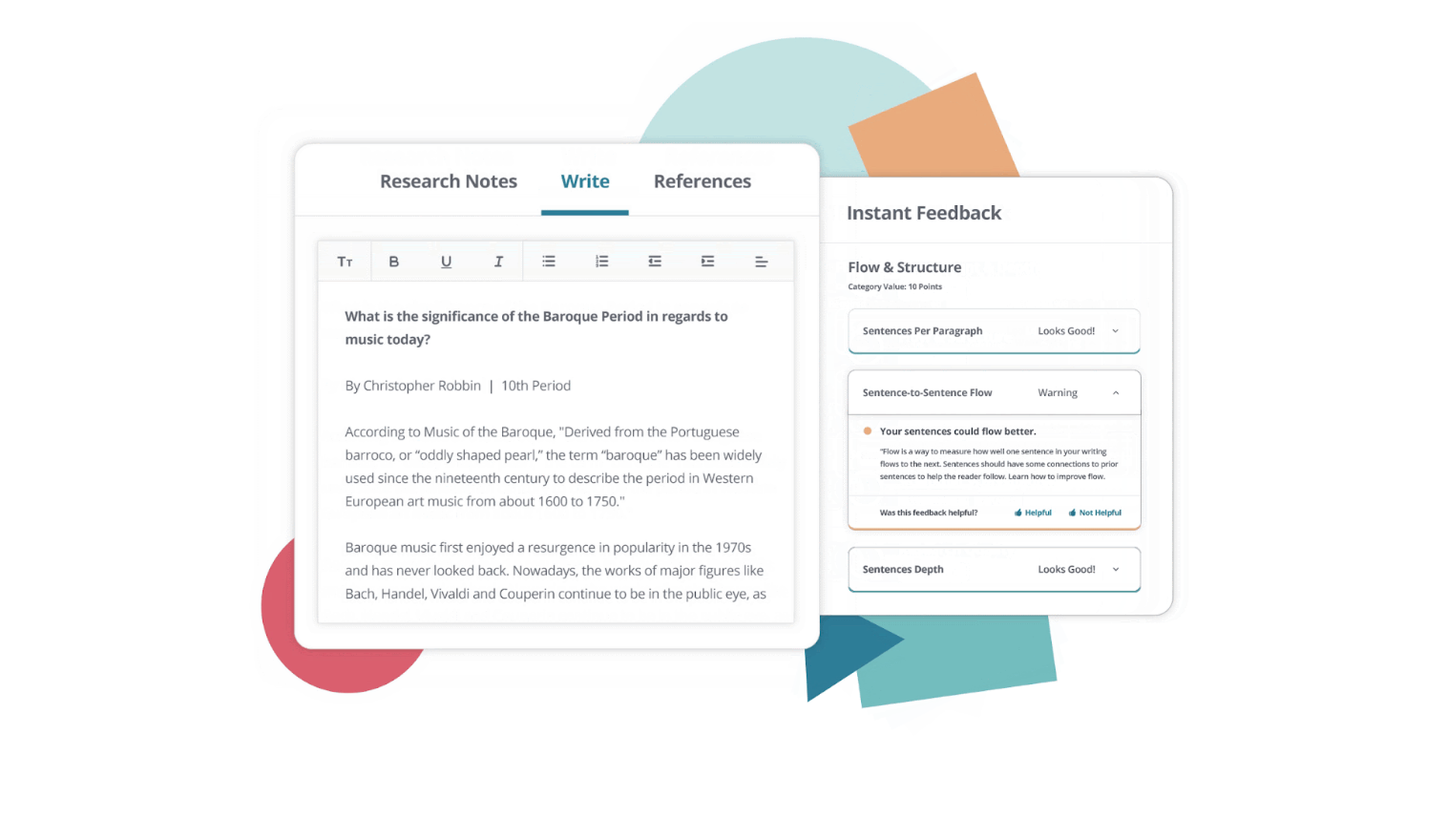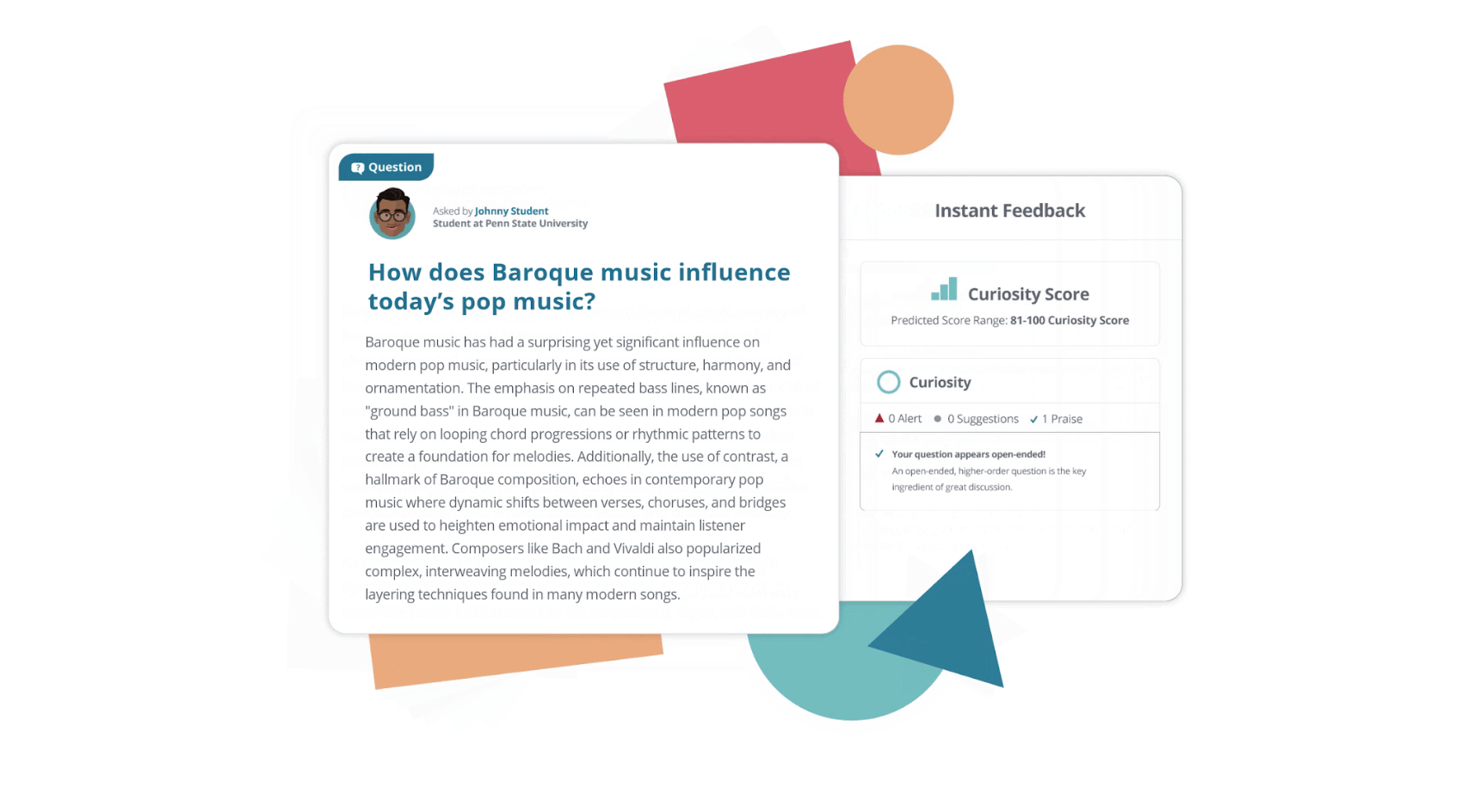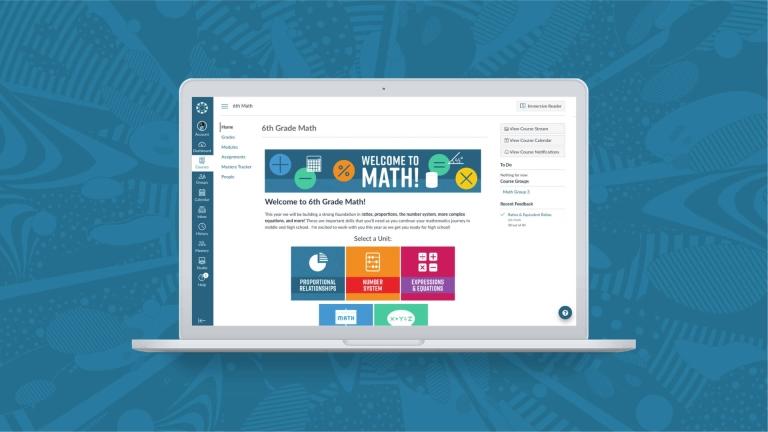From Detection to Prevention: Rethinking Academic Integrity with Packback’s Instructional AI
We believe the key to academic integrity lies in creating a motivating, feedback-rich learning environment that is easy to navigate—one that strengthens writing, critical thinking, and engagement while addressing the root causes of dishonesty and dissatisfaction. Detection has its place as a tool, but true academic integrity is built through prevention during the process, not punishment after submission.
Through our integration with Canvas by Instructure, we’re taking this mission further by providing a seamless, unified experience for educators and students. No longer do you need to implement 3+ disparate solutions for course administration, writing feedback, grading automation, and academic integrity. With the Packback + Canvas integration, you can significantly reduce noise, increase educator satisfaction, and enhance student outcomes in one, singular place.
For instance, back in 2019 we crossed paths with a professor at VCU named Keith Hollowell. VCU had recently switched their LMS to Canvas and Keith was looking for a tool that could help guide his students to hone their creative and critical thinking skills. However, he needed an integrated tool that would provide all of his students the opportunity to share their voice, not just the vocal ones.
Keith found Packback through our integration with Canvas and the rest, as they say, is history.
“6 years later, Packback and Canvas are where my course engagement and assessment live. Students complete all formative and summative writing in Packback, and with the deep integration in Canvas grading and administration takes about half the time compared to my life before integrating the two tools. Beyond that, my students and I no longer have to utilize 3-4 disparate platforms for writing feedback, grading, administration, and originality. The Packback and Canvas integration is my one-stop shop for improving student outcomes and saving my time.”
Navigating the Challenges of Academic Integrity
Before GenAI, it was relatively simple to catch academic dishonesty. Plagiarism detectors looked for matches in previously submitted work, generating a report that produced evidence of misconduct. Traditional detection worked as a deterrent and surveillance system, even if its primary goal wasn't to improve academic outcomes.
However, the introduction of generative AI has complicated things. There isn’t a database where all results produced by genAI can be indexed and matched against. AI detectors are statistical models that predict (not prove!) the likelihood that something could be AI-generated. Thus, we accept “false positives”, where we accuse students of submitting work generated by AI, despite not being generated by AI.
The Center for Innovative Teaching and Learning at Northern Illinois University recently wrote an article about the downfalls of detection, stating “If a typical first-year student writes 10 essays, and there are 2.235 million first-time degree-seeking college students…If the false positive rate were 1%, then 223,500 essays could be falsely flagged as AI-generated.”
The implication of over 200,000 false accusations is astounding. There is no doubt that we need better solutions and it is my belief that committing to two strategies will positively impact our students and institutions. First, use detection technology responsibly and transparently. Second, and most importantly, implement academic technology that proactively prevents plagiarism – which Canvas and Packback are uniquely suited to do.
Promoting Academic Integrity Through Intrinsic Motivation
To promote academic integrity, Packback integrates a psychological framework called Self-Determination Theory (SDT) into our product design. This framework shares the required conditions for an individual to feel intrinsically motivated: autonomy (choice), relatedness (purpose), and competence (mastery).
In a new world where students can press a button and generate unoriginal work for submission, our decade-old mission to motivate students to express their voice has never been more relevant.
Mastery
Across the Packback platform, integrated entirely into the Canvas iFrame (no external URL or login needed), students receive instant feedback as they are writing. This feedback is powered by “Instructional AI”, which doesn’t generate content for students, but provides real-time suggestions on writing, research, and drafting skills. The outcome of instant feedback is tremendous, with students reporting a 55% increase in confidence in their writing skills and educators citing a 89% increase in satisfaction with student writing.

Autonomy
When we launched our flagship product, Packback Questions, our goal was to motivate students to engage in classroom discussions regardless of course format or size. Our strategy to do so was anchored around student choice. We built a platform that put students in the driver's seat allowing them to ask each other open-ended questions related to the subject matter. This shift in philosophy gave students the autonomy to apply the concepts learned in class in a way that is meaningful to them.
While student-led discussion made some professors uncomfortable, their apprehension dissolved when they saw that students were posting 2x more often and citing 2x more sources. This renewed energy and motivation was also reflected in the students’ final grades–instances of reported ‘A’s’ increased by 11% after using Packback.

Purpose
Students want to know “why should I care?” not because they are rude, but because they are starving to understand the purpose behind learning something new. We wholeheartedly believe that the way you get a student to “drink the water” is by building a relationship between them and the subject matter. The person who is best positioned to do that is the educator, not technology.
Packback’s instructor tools bring the students closer to their educators, enabling them to consistently reinforce the “why”. How do we do this? One of our features, Match & Message allows an educator to identify students by common behavior and send a customized message in a few clicks. Other features like Custom Feedback and Polls further bridge the gap, giving educators the opportunity to connect with, converse with, and ultimately, provide purpose to their students.
Responsible use of Detection Technology
Boundaries should exist in classrooms, which is why detection technology deserves the right to exist in institutional budgets and tech stacks. That said, in order to do detection right, detection should be transparent, minimize false positives, and include educator training.
Transparency
Researchers at Technical University of Munich conducted an experiment in parallel classes using detection technology, one of which was informed about the use of plagiarism detection, and the other not. The results? The instances of similarity in submitted assignments saw a drastic reduction by 96.5% compared to the control, and the overall average grades for exercises witnessed an improvement of 24.6%. The paper concluded that “transparently using plagiarism detection not only serves to mitigate instances of plagiarism but also facilitates enhanced comprehension of programming concepts among students”.
From the outset, we must inform students of our use of detection in order to participate in the upside of detection. That’s why Packback communicates with students that all submissions will be checked for plagiarism and AI-generated text, and with instructor control, provide proactive plagiarism and AI-detection reporting to students before submission.
Minimization of False Positives
AI detection models are a balance of accuracy and false-positives—the higher the accuracy, the higher the false-positive rate. When adopting AI detection technology, it can be tempting to be sold by promises of high accuracy, but I plead with you to remember the cost of that accuracy. While we navigate the new world, I implore educators and institutions to adopt a solution that prioritizes minimizing false positives, while simultaneously seeking to prevent generative AI misuse through motivation, pedagogy, and feedback.
Educator Training
If educators are implementing AI detection technology provided by the institution, it is incredibly important to educate our teachers on how AI detectors work, AI detection flaws, and how to address an accusation with a student in a way that minimizes risk for that institution.
In coordination with several Professors, we developed a guide to AI detection for educators and hosted a series of panels addressing the question… “What do I do now that I’ve potentially detected AI-generated text?”
Embracing a New Era of Meaningful Solutions in Education
ChatGPT went viral over 2 years ago, sending a shockwave through our colleges and districts. While arguably many institutions reacted too quickly in banning AI or incorporating flashy technology, we’re past the initial hype phase. If your response to generative AI has been bolstered detection, it’s time to rethink your investments. Keeping up with AI detection technology is an arms race, and one I believe is not worth fighting. The cost is too high. Beyond that, this arms race distracts us from implementing solutions that can make a meaningful impact—solutions that motivate students, support faculty, and improve academic outcomes, especially in the face of an uncertain future.
To learn more, we invite you to join Packback and Instructure on March 13th at 10 AM/11AM CT for an engaging discussion on how the integration between Packback and Canvas allows institutions to address the rising complexity of academic integrity, course administration, writing feedback, and grading automation in one singular place.
Related Content
 Teaching-With-Tech-10-Benefits.jpg
Teaching-With-Tech-10-Benefits.jpgBlogs
 canvas_x_tg_logo_lockup_780_x_520.png
canvas_x_tg_logo_lockup_780_x_520.pngBlogs
 roi-lms-business.jpg
roi-lms-business.jpgBlogs